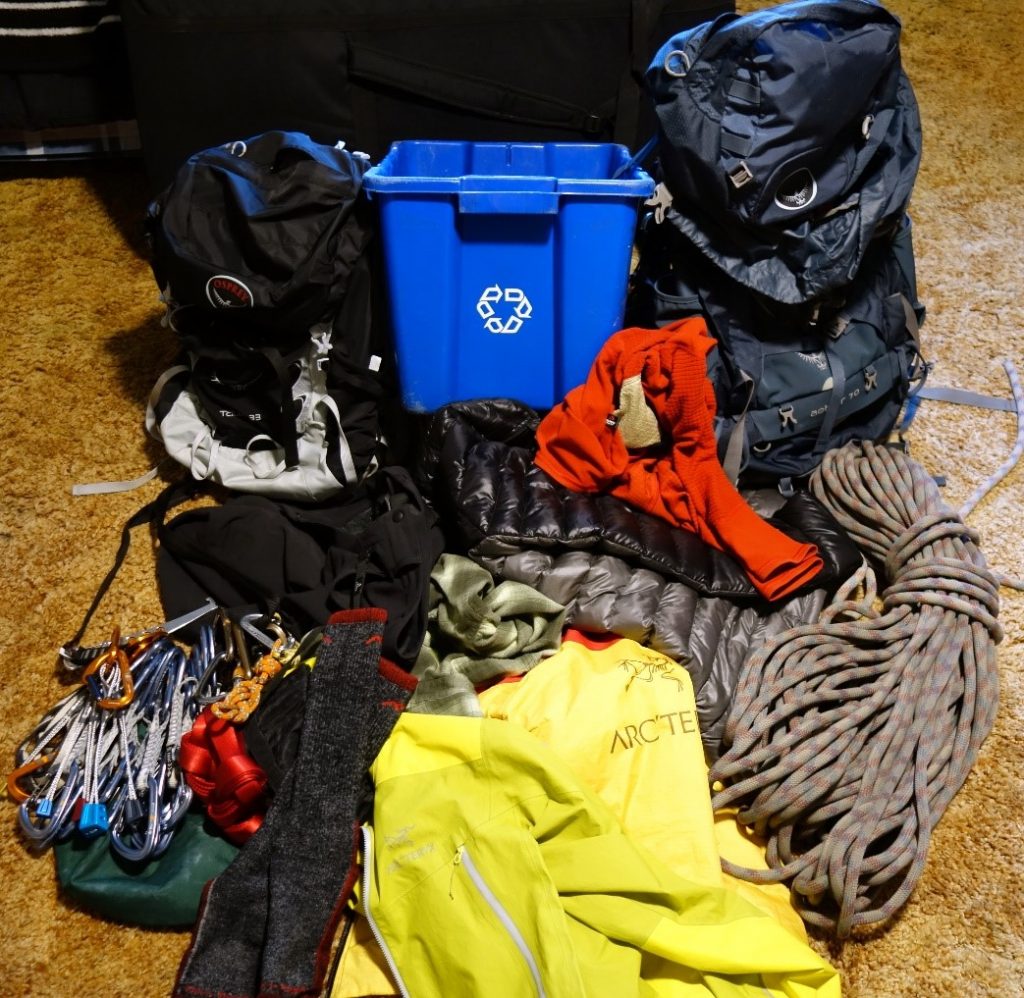Spending time in the outdoors tends to foster a sense of environmental consciousness. We all love getting new gear, but the equipment we accumulate and use up can be tricky to dispose of responsibly. So, as a solution, here are some ways to minimize your outdoor gear’s environmental impact.
Fuel Canisters (MSR, JetBoil, etc.)
From MSR’s PocketRocket and WindBurner models to JetBoil’s Flash and Joule, many camping stoves have one thing in common: They use non-refillable fuel canisters, which then end up piling up in your gear closet. However, to recycle these canisters, don’t just throw them out on the curb, though. As they are a mixed metal that is potentially hazardous for recyclers, they have to be prepared beforehand:
- Burn off all of the fuel in the canister. This may take a while, because the pressure in the canister is low. Even after the flame sputters out, there may be some residual vapors. So, instead, keep your stove valve open for a few more minutes.
- Once you are sure no fuel is left in the canister, it is time to puncture it! To begin, use a screwdriver, a hammer and nail, an ice axe, or a special tool, like the JetBoil Crunchit. As you do, make sure to wear protective equipment while puncturing the canister. After, labeling the canister with permanent marker as “empty” or “punctured” helps ensure it will be accepted for recycling.
- Find out where to recycle it. A quick internet search will let you know if the weekly recycling will accept those canisters. Not many local programs pick up mixed metals from the curb, however, so they might be thrown away if they are just tossed into a bin. As another option, local recycling centers may take them. So, once you’ve amassed a large quantity, it might be time to take a bag full of them to the nearest recycling plant.
Batteries
Some recycling centers also accept batteries. To find such a location, a quick search on Earth911 or Call2Recycle provides you with recycling centers and drop-off locations taking used batteries and other items.
Headlamps, GPS Units, and Other Electronics
Headlamps can be broken down into components:
- The lamp body is recyclable as waste from electrical and electronic equipment (WEEE), which can be deposited at a local recycling center. Find a location, again, through Earth911.com.
- The strap is typically not recyclable, but a fabric recycler may accept it for scraps.
- Batteries (see above).
GPS units and other electronics can be similarly broken down into components and taken to a recycling center.
Old or Damaged Climbing Gear
Some rope companies, including Millet, Sterling, and PMI, will recycle your retired climbing ropes, regardless of the manufacturer. For retired hardware, your best bet is to bring it to a metal recycler.
Shoes, Clothes, and Other Fabrics
Some companies have recycling initiatives, like The North Face’s Clothes The Loop, and some even offer incentives for recycling your old hiking, backpacking, and climbing apparel! Shoes and clothing can always be donated to a thrift store, as well. There, the store will put your donations up for sale, and if they are not sold, they are converted to scraps to be reused.
It is important to remember that recycling is only one component of the three R’s. Reducing and reusing are even more essential to sustainable living! So, buy quality gear, consider buying used gear, and try to repair your equipment when possible.

Edmund Falkowski
Born in Buffalo, NY without easy access to mountains, Edmund grew up focused on academics, music, and team sports. After a back injury at age 15, he discovered trail running and climbing. It wasn’t until his freshman year of college that he actually experienced the mountains, but he immediately found a home-away-from-home in the Adirondacks. He now pursues his passions of climbing hard and hiking fast as a Trip Leader in his college’s Outdoor Adventure Club while juggling his college education in Physical Therapy. At the end of the day, Edmund is just really stoked to spend time outside, and is always planning his next sufferfest.
Related Posts
April 5, 2024
Book Review: Arctic Traverse: A Thousand-Mile Summer of Trekking the Brooks Range by Michael Engelhard
Take a trip to the world’s northernmost…




